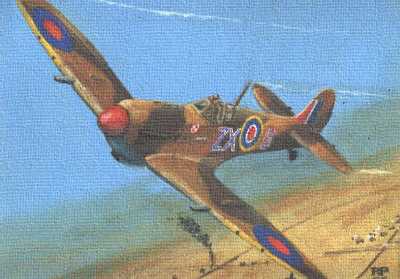
Four of the 15 pilots of the PFT: S/Ldr Waclaw Krol, W/O Wladyslaw Majchrzyk,
W/O Mieczyslaw Popek and P/O Wladyslaw Drecki |
|
Consequently, in the end of 1942, word was circulated among Polish fighter
squadrons, that volunteers for the Team are being sought. However, only
pilots who had been with a fighter squadron for at least a year, and had
flown 30 or more sorties over enemy territory would be accepted. Out of
68 volunteers, 15 pilots were selected. They were a mix of truly experienced
veterans, who had flown in all the major campaigns against the Luftwaffe
since 1939, and aggressive, up-and-coming youngsters - but already with
healthy operational experience. The command was given to Stanislaw Skalski,
an ace with 15 victories to his credit, and one of the two most successful
Polish fighter pilots at that time.
Polish Fighting Team was formed on February 5, 1943 in the Polish fighter
base at Northolt, and after crossing the Mediterranean by ship and some
further travel, arrived at Bu Gara airfield, 150 miles west of Tripoli,
on March 13. The pilots were attached to No. 145 RAF Squadron as the 'C'
flight, and equipped with six Spitfires Mk. V. The Team achieved operational
readiness on March 17, but it wasn't till March 28 that Polish pilots for
the first time engaged enemy planes over African soil. By then the Team
had been re-equipped with the latest British fighters of the time, Spitfires
Mk. IX. |




